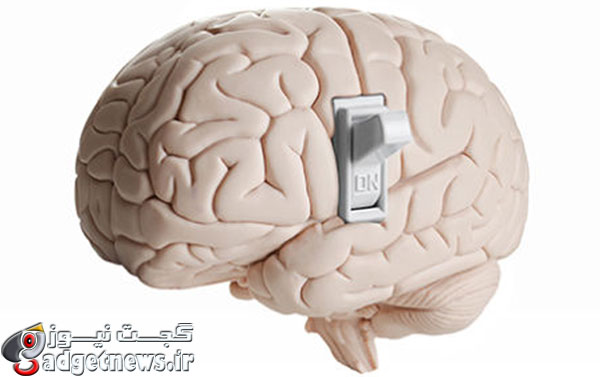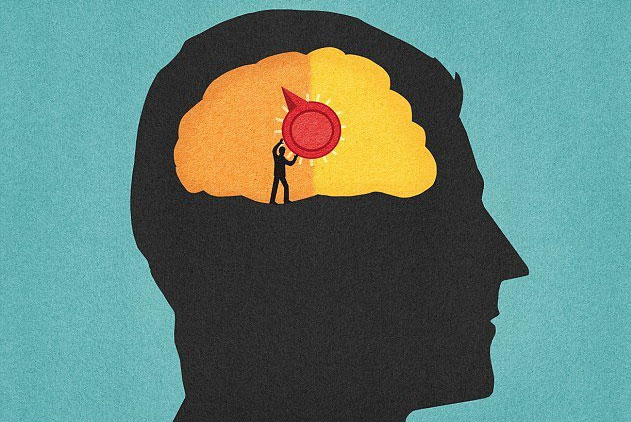
محققان دانشگاه جورج واشنگتن موفق به کشف یک کلید خاموش/روشن در مغز شدهاند که میتواند انسانها را بیهوش یا هوشیار کند.محققان با مطالعه یک بیمار مبتلا به صرع دریافتند پالسهای الکتریکی یک بخش خاص در موارد مکرر باعث به خواب رفتن وی میشود.
توقف تحریک مغزی این بیمار باعث بیرون آمدن وی از وضعیت نباتی شد و هیچ خاطرهای برای بیمار از این وضعیت باقی نمانده بود.هوشیاری حالتی است که در آن فرد از اطراف خود آگاه و نبود آن اغلب با خواب همراه است.اگرچه هنوز چگونگی عملکرد هوشیاری تا حدی اسرارآمیز باقی مانده و در حقیقت، دلیل اصلی چرایی و چگونگی بخواب رفتن انسان هنوز بحثبرانگیز است.
کشف این کلید خاموش/روشن میتواند در حوزههای خاصی از پزشکی بسیار سودمند باشد.محققان در یک کارآزمایی بالینی تحریکات عمیق مغزی با فرکانس پایین را برای کمک به کاهش حملات صرع در بیماران اعمال کردند.آنها دریافتند تحریک فرکانس پایین تا 29 درصد بدون لطمه زدن به حافظه به کاهش حملات صرع کمک میکند.اما زمانی که از پالسهای الکتریکی فرکانس بالا استفاده شد، آنها توانستند تاثیر جالب خاموش/روشن را کشف کنند.

محققان با تحریک کلاستروم یک بیمار 54 ساله که بخشی از نورونها در پایین مرکز مغز است، وی را بیهوش کردند. این بدان معنا بود که بیمار به فرمانها واکنش نشان نداده، مستقیم به فضا خیره شده و تنفس وی آرام خواهد شد.هنگامی که تحریک این بخش متوقف شد، بیمار به هوش آمده ولی کاملا از اتفاقی که پیش از آن رخ داده بود، بیخبر بود.طی دو روز هر بار که کلاستروم تحریک میشد، همین رویدادها اتفاق میافتاد و بررسیهای جانبی نشان داد که این تاثیر از عوارض جانبی صرع نبود.
یکی از احتمالات هیجانانگیز این کشف میتواند آن باشد که در افراد به کما رفته، این منطقه میتواند برای کمک به بازیابی هوشیاری تحریک شود.
گام بعدی دانشمندان، اعمال این تاثیر در بیماران دیگر برای مشاهده نقش کلاستروم در هوشیاری است.
منبع : gizmodo
Every one of us loses consciousness on a daily basis: it’s called sleep. But scientists have never understood which part of the brain controls when you’re conscious and when you’re not. Now, researchers seem to have found it by coincidence while studying an epileptic patient—and used electronic brain stimulation to flip the switch on and off.
As New Scientist reports, researchers at George Washington University were using deep brain electrodes to monitor brain signals and try to pinpoint the area of a patient’s brain that was causing her seizures. One of the electrodes was placed on the claustrum, a thin sheet of neurons running between major structures of the brain—and a region that’s never been studied with deep brain electrodes before.
Unexpectedly, when the researchers sent high frequency electrical signals to the claustrum, the patient lost consciousness: unlike a seizure, where a person’s activity immediately stops, the patient seemed to “slow down,” speaking more quietly and moving more slowly until she was silent and still, unresponsive to voice or visual stimulation. She was, by definition, unconscious, regaining full consciousness with no memory of the event as soon as the electrical stimulation was turned off.
The discovery has huge potential implications for patients with epilepsy or in semi-conscious states, but this is a very early stage: so far, this on/off switch has only been tested in one patient. But pinpointing where consciousness is located in the brain will be crucial to deeper understanding of how the brain works, as researcher Christof Koch told New Scientist:
Ultimately, if we know how consciousness is created and which parts of the brain are involved then we can understand who has it and who doesn’t. Do robots have it? Do fetuses? Does a cat or dog or worm? This study is incredibly intriguing but it is one brick in a large edifice of consciousness that we’re trying to build.
Maybe someday, we’ll fall asleep by flipping the OFF switch located deep within our brains.
 گجت نیوز آخرین اخبار تکنولوژی، علم و خودرو
گجت نیوز آخرین اخبار تکنولوژی، علم و خودرو 





